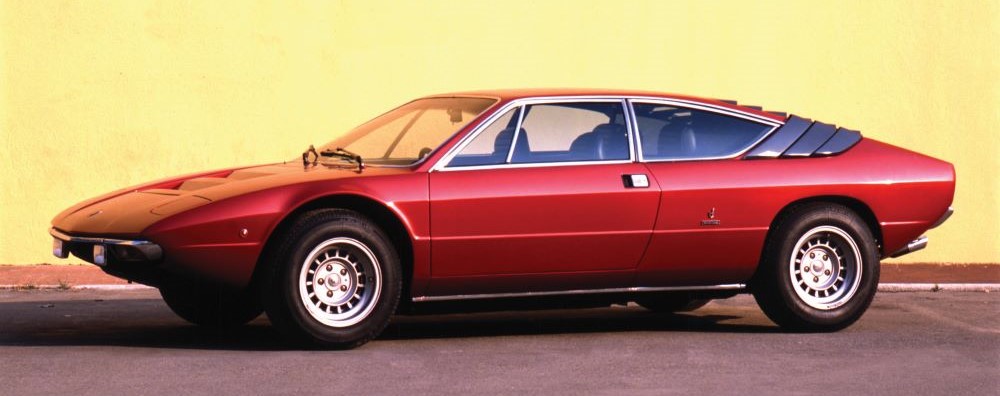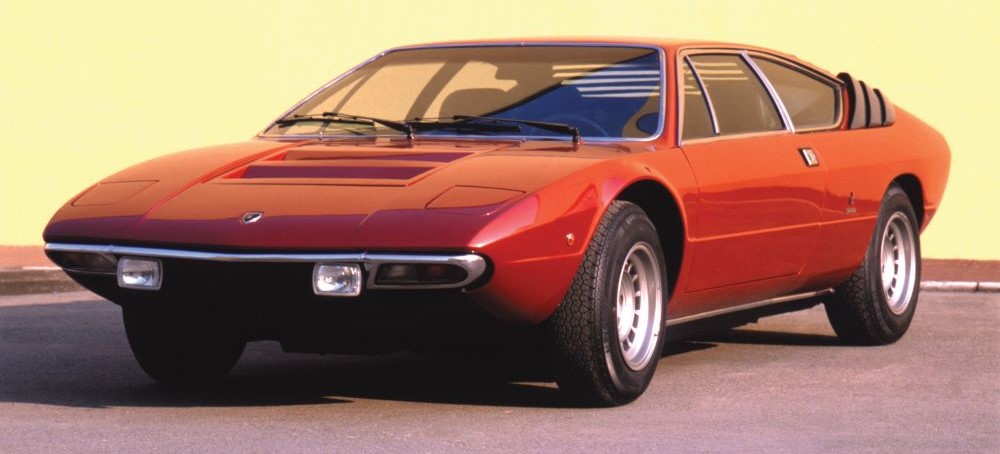
With the Urraco, Ferruccio Lamborghini intended to build a more economical sports car which comes in the same price bracket as the Porsche. Announced and presented in 1970 was another Lamborghini, but a radically new and ‘different’ one. It was the P250 Urraco once again, the name of a fighting bull. The Urraco featured a 2.5-litre engine specially designed by Stanzani, with single overhead camshaft timing system.
It was built to criteria that would permit large scale production (by Italian sports car standards), it had a lovely line designed by Bertone, and – at least on paper – it offered excellent performance at a much lower price than the Miura. To make this car, Lamborghini expanded the Sant’Agata factory, constructing a spacious new building behind the one already being used, thus adding nearly 500 square metres of new factory space. The basic assumptions couldn’t have been better: the car, presented on time at the Turin Auto Show in October 1970, aroused enormous excitement and the orders poured in.
The Coupé 2+2 line, presented in 1970, another one of Nuccio Bertone’s whims, a new 8-cylinder engine is designed for the engine, launched on the market first with a 2.5 litre displacement and later (in 1974) with 3 litres, while a 2-litre V8 was also proposed for the Italian market.
In 1972, the Urraco, which had experienced several initial slowdowns, was finally put into production. Almost inevitably, the S version also arrived in October of that year. In this case, the goal was not to enhance the car’s performance but to improve its overall quality, which had been neglected in the haste to start production.

In 1973, two new Urraco models were presented. In effect, they were spin-offs of the P250 range: a two-litre model (P200), again with a single camshaft but this time with a lower engine displacement in deference to tax restrictions, and a more powerful and mature 3-litre model (P300), with double overhead camshaft timing system and the power raised to 250 hp. The gradually deteriorating social situation and the drop in sales made it necessary to streamline the production range.
Lamborghini decided to work alongside Bertone to develop a Urraco model with a removable roof panel. Presented at the Geneva Motor Show in 1976, the Silhouette was an aggressive model with an unmistakable appearance. The Silhouette had the 3-litre 260 hp V8 engine of the Urraco P300, mid-mounted transversally behind the cockpit, and the body and chassis were made completely of steel.
Initially Lamborghini planned an annual production of 2,000 vehicles but, starting from 1972, only 780 Urracco, of which 520 of the P 250 version, 194 of the P 300 model and 66 P 200 for Italy were sold in ten years. Production ended in 1979
Specifications
Year of manufacture: 1972 – 1979
Engine: V 8 – 2/2.5/3-litre displacement
Power: 182/220/250 HP
Max. speed: 220 – 250 km/h
Production numbers: 780 (all three series)


You must be logged in to post a comment.